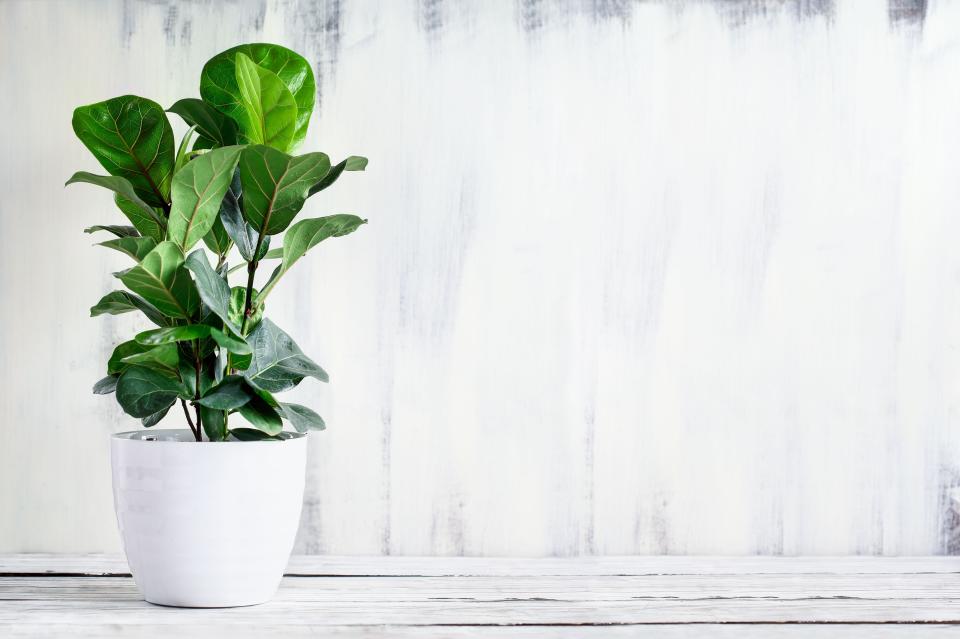How to care for fiddle-leaf figs: watering, repotting and where to position them

A little fiddle-leaf fig, great for achieving the same effect in smaller spaces
(Alamy Stock Photo)The fiddle-leaf fig, or Ficus lyrata, is the go-to tree for height and structure in any home.
The large leaves often take on the shape of, you guessed it, small fiddles or violins.
Similarly its botanical name, lyrata, refers to the leaf tapering down to a point where it connects to the stem.
It is reasonably easy to care for, providing great results if you follow a few simple steps.
How to care for a fiddle-leaf fig
The fiddle leaf fig tree is native to the countries along the coast of West Africa from Senegal to Cameroon, where they enjoy a warm and humid tropical to subtropical climate.
They are however very adaptable trees and are also happy indoors, but they can be a little sensitive when they are first moved, often losing some, occasionally all of their leaves in the first few weeks of changing location.
If this happens to you, all may not be lost, it’s worth giving these plants some time to recover.
Once your fiddle leaf has settled the main key to success comes down to watering. The roots of Ficus lyrata are a little more sensitive than other houseplant roots, and really resent being wet for too long.
You should aim to allow between fifty and seventy five percent of the compost around the roots to dry out before watering again.
There are lots of technical gizmos to help you with this, but the easiest way is to get familiar with the weight of the plant in its pot. As the compost dries out it gets lighter, and you can use this to work out when to water again. It’s best to ease off from the watering in winter, watering only when the plant has almost completely dried out and start again in the spring.
Fiddle leaf plants prefer it on the warm side, and are particularly averse to drafts. They are best kept at an ambient temperature of around 16 degrees C or above and out of doorways and hallways.
Bright, filtered or indirect light is best for the leaves of your Ficus lyrata. Rooms with an East or west facing window are perfect. Too much sun and the leaves can burn. Not enough light and growth may be stunted or start to bend towards the window.
There is a smaller cultivar of the Fiddle Leaf fig which has the name ‘Bambino’, normally with smaller leaves about a third of the size and is great for achieving the same effect in smaller spaces.
Can you propagate a fiddle-leaf fig?
Older fiddle leaf figs can be propagated from stem cuttings.
You’ll need at least one leaf and node, but you are likely to have more success if you can spare a section with 3 or more leaves.
Remove all but the uppermost leaf from the stem, being careful of the white sap which can be an irritant.
Place the bottom third of the stem in a glass of room temperature water and keep in the same bright indirect light that the plant is in.
Within a few weeks the cutting should have started to root. It can be potted on into peat-free organic compost.
Lots of online guides show how to root a cutting from a single leaf that has been broken from the stem, these leaves will root, but will sadly never grow into a new plant.
George Hudson is Head of Plants and Education at Walworth Garden, a South London charity delivering workshops, courses, therapeutic horticulture and plants for sale in a garden open to all. Follow on Instagram @walworthgarden
Read More
How to care for mistletoe cactus: watering, repotting and where to position them
How to care for moth orchids: watering, repotting and where to position them
How to care for tree philodendrons: watering, repotting and where to position them

 Yahoo News
Yahoo News 